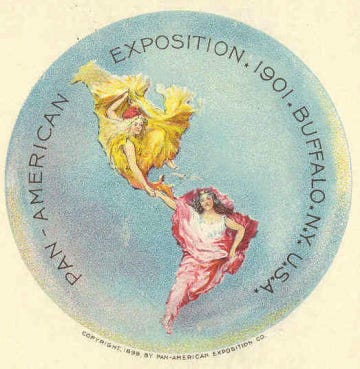The pros and cons of Pan-Americanism
An idea kicked around but never seriously realized until ... climate change hits?
Pan-Americanism as a geo-strategic argument for hemispheric regionalism extends as far back as the 1880s in the United States. It arose then because America itself was rising and wanted to justify getting into the imperial race with established European powers.
Pan-Americanism has also been championed over the decades by Southern Cone countries like Argentina and Chile, which similarly sought to use such cooperation to advance their own interests.
In 1890 and at the urging of the U.S., the First International Conference of American States was convened in Washington D.C., attracting a wide range of governments from across the Americas. Argentine diplomat Roque Sáenz Peña proposed a hemispheric customs union inspired by the German Zollverein (free trade area) that enabled that country’s unification. Peña sought a middle ground between U.S.-driven Pan Americanism and the ambitions of the Southern Cone countries.
Over the following decades, pan-Americanism attracted a variety of attention and activism from across Latin America, both supportive and highly critical. In each instance, the country in question viewed the notion from their own take on the benefits of regionalism, with the Southern Cone countries coming closest to America’s position — something to think about as Argentina’s new populist leader pushes for dollarization.
The most recent and serious effort at deeper hemispheric integration involved the Clinton Administration’s proposal for a Free Trade Area of the Americas (FTAA) in the 1990s. Unlike the EU, the FTAA sought to integrate existing subregional blocs like Mercosur, rather than creating a new supranational structure. For an interesting article on how China is approaching that complex trade environment, see “China is Untangling the Latin American Spaghetti Bowl” in The Diplomat (a dense read but informative).
So why no real progress in the Western Hemisphere in the manner of the EU?
Keep reading with a 7-day free trial
Subscribe to Thomas P.M. Barnett’s Global Throughlines to keep reading this post and get 7 days of free access to the full post archives.




